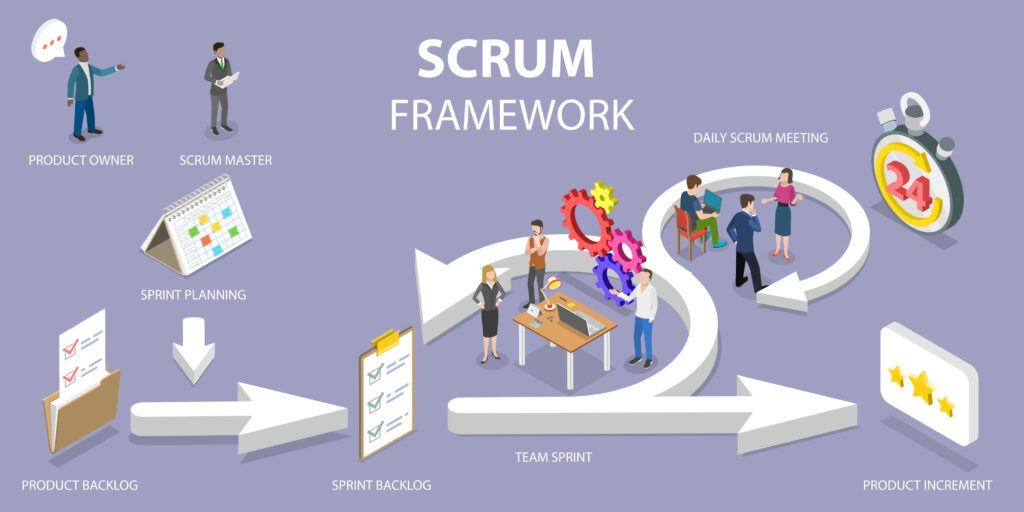LogiCommerce is trusted by global enterprise brands and wholesalers, across industries
The Scrum methodology is a process designed to carry out projects faster and more efficiently, fostering collaboration and teamwork, and achieving better results.
The Scrum methodology consists of breaking a project into smaller, manageable chunks with predefined steps, known as sprints. By taking on the project in digestible chunks, Scrum ensures that the goals and objectives of each sprint can be completed properly.
Therefore, it not only increases productivity and closes the delivery cycle faster, but also fosters collaboration between teams and keeps everyone aligned with the mission of each step and the overall vision of the project.
The Scrum methodology provides an excellent framework for teamwork, allowing members to work in an orderly and organized manner towards their goals, which translates into higher customer satisfaction due to project results and delivery.
The Scrum Team is comprised and composed by members of the work team, whose mission is to collaborate to achieve efficient work processes. The Product Owner, who represents the client's interests in the project, responsible for aligning with the objectives set. And finally, the Scrum Master, who acts as a facilitator to help the team develop the project correctly and facilitate communication between all participants, as well as maintain progress in all sprints.
Allows to be more efficient in delivering projects and obtain better results.
Increases productivity and flexibility of team members.
Improves project quality and, therefore, customer satisfaction.
It brings significant value to the company and enriches the work environment.

1. Start planning. Sprint planning is an essential part of the Scrum methodology, which helps teams to better organize their workload and assign tasks efficiently. In this phase, tasks are assigned and divided among the different members of the group, and an estimate is provided on the time needed to complete the assigned tasks. This ensures that all members understand their individual roles and responsibilities to properly complete the project tasks.
By accurately assessing these factors, projects can be completed to meet the client's expectations because each member has a higher level of awareness of the task, he or she has committed to do.
2. Scrum team meeting. Team meetings are an important part of the Scrum methodology. They are held daily and are brief. They allow the team to be updated daily on the tasks that have already been done, and what remains to be done. In addition, they also allow the team to share any doubts or problems that may have arisen in order to arrive at a common solution.
Scrum team meetings provide incredible value, as they promote active communication among team members and ensure continuous progress.
3. Backlog refinement. An essential step in project development, allowing the Product Owner to review tasks and their progress to ensure that the most efficient procedures are adopted to save time and effort. By refining the backlog, the Product Owner can address any issues that may have arisen, as well as streamline processes that are tedious or take longer than expected.
Ultimately, it gives teams a way to actively evaluate their development strategy and course-correct if necessary to save resources and complete projects on time.
4. Spring Review. Sprint reviews are key meetings between the customer and the development teams, which allow both parties to be in sync and understand the progress made. The customer's presence is essential as he can provide valuable feedback and resolve any doubts.
Ultimately, these reviews serve as a checkpoint of achievements within specific timeframes up to the point at which they are conducted. This not only helps to establish relationships between the client and the development teams, but also allows both parties to know where they stand at any given moment.
5. Retrospective. This is an important meeting that takes place at the conclusion of a project, in which all team members meet to review their collective achievements and challenges. They are usually focused on acquiring knowledge to improve on future projects; they enable team progress by identifying and sharing key lessons learned throughout the project. In addition, they also provide much-needed insight into the difficulties encountered, allowing teams to understand what went wrong and how it can be avoided in future projects.
They should take place in a supportive environment and create an opportunity to discuss what needs to be adjusted or improved on future occasions.

